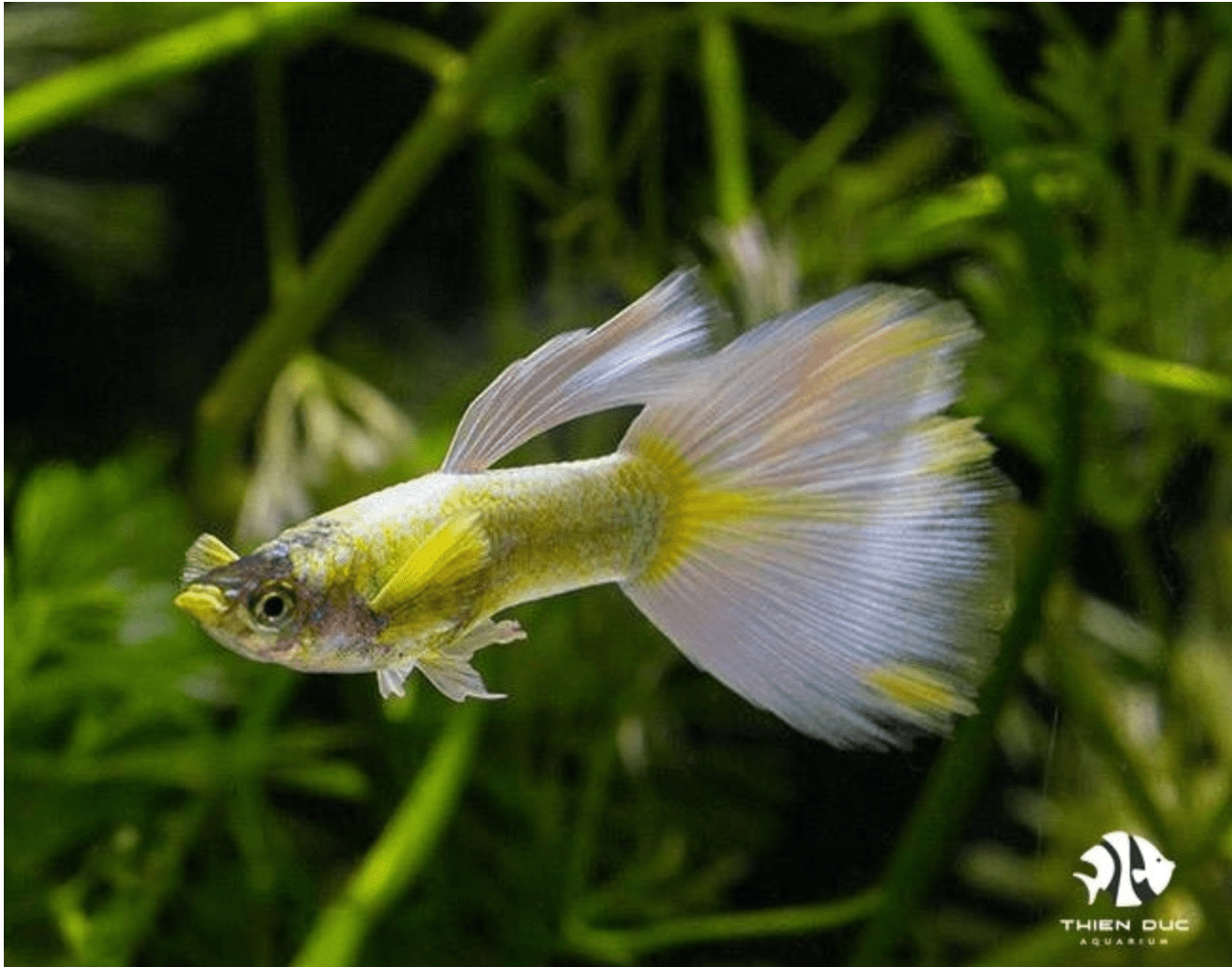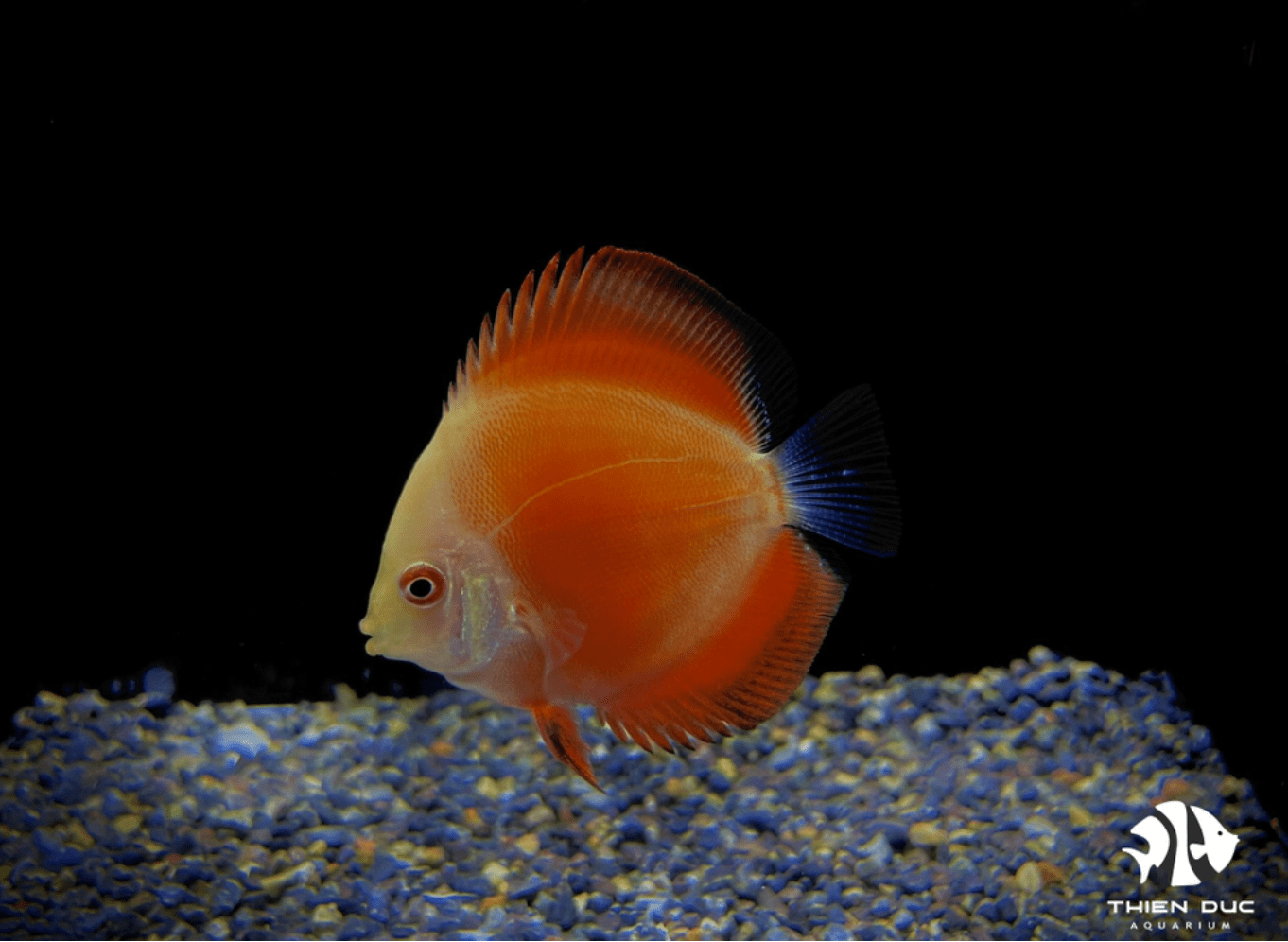Submerged Driftwood for Fish Tanks: Best Preparation
Submerged driftwood for fish tanks is a beautiful addition that creates a natural aquascape and benefits your fish. At THIENDUC AQUARIUM, we specialize in exporting high-quality freshwater fish and helping aquarists create safe, stunning tank setups. This guide is tailored for our customers in the EU, from Germany to the UK, to help you properly prepare your driftwood for a safe and beautiful result.
The Value of Appropriate Planning
Adding driftwood to your aquarium without proper preparation is a risk that no serious aquarist should take. While the benefits are numerous, so are the potential problems if the process is rushed. The primary goal of preparation is to create a safe, stable, and clean piece of hardscape that will not harm your fish or disrupt the tank's delicate ecosystem.

Safety First: Mitigating Risks
Unprepared driftwood can introduce a variety of contaminants into your aquarium. Wood collected from the wild, in particular, may harbor bacteria, fungus, algae spores, or even small insects. These can quickly multiply and lead to disease or an unsightly bloom in your tank. Furthermore, many types of wood release harmful substances or can drastically alter your water's pH balance, making it unsuitable for your fish. The tannins, which give a beautiful “blackwater” look, can be excessive, and some woods may release sap or resins that are toxic to aquatic life. Our commitment at THIENDUC AQUARIUM to providing the best quality products extends to guiding you on how to avoid these issues. Our extensive experience with wild fish species has taught us the paramount importance of recreating a pristine, natural environment.
Aesthetic and Practical Advantages
Once properly prepared, submerged driftwood for fish tanks offers incredible value. Visually, it provides a dramatic, natural centerpiece that adds depth and a sense of realism to your aquascape. Functionally, it serves as a vital part of the aquarium's ecosystem. The wood provides a surface area for beneficial bacteria to colonize, which aids in the nitrogen cycle and helps keep your water clean. It also offers hiding spots and a sense of security for your fish, which is particularly beneficial for wild-caught species and shy inhabitants.
Step-by-Step Preparation Guide
Sourcing Your Driftwood
The journey to a beautiful aquascape begins with the right piece of wood. The choices are generally between store-bought and wild-collected driftwood. For our discerning EU customers, we recommend opting for a reputable supplier to ensure the wood is safe and responsibly sourced.
-
1. Wild-collected vs. Store-bought: Wild-collected wood, while potentially free, comes with significant risks and requires extensive preparation. You must be certain of the wood type and its history to ensure it is not treated with chemicals or pesticides. Store-bought driftwood, on the other hand, is generally a safer option. It’s often pre-cleaned and sourced from safe species, although it still requires a proper preparation process. We at THIENDUC AQUARIUM can offer advice on hardscape options that perfectly complement our fish and your tank.
-
2. Choosing the Right Type: Not all wood is safe for an aquarium. Softwoods that release toxic resins, like pine and cedar, should be avoided. Instead, choose hardwoods that are dense and durable. Excellent choices that are widely available and safe for a submerged driftwood for fish tanks setup include Manzanita, Mopani, and Malaysian driftwood. These types are known for their beautiful shapes and durability.

The Cleaning Process
This is the first physical step to remove any surface impurities.
-
1. Mechanical Cleaning: Begin by using a stiff brush (a simple scrubbing brush works well) to remove any loose bark, dirt, or debris from the driftwood. This is a crucial step to prevent excess organic matter from entering your tank and causing problems. Pay close attention to any crevices or nooks where debris might be trapped.
-
2. Initial Rinsing: After scrubbing, give the wood a thorough rinse under warm running water. This will wash away the dislodged dirt and give you a clean surface to work with for the next, more intensive, steps.
The Boiling Method: The Most Effective Way
Boiling is the single most important step in preparing your submerged driftwood for fish tanks. This process serves multiple purposes, from sanitation to water treatment.
-
1. Purpose: Boiling the wood helps to kill any lingering bacteria, parasites, or algae spores that could harm your fish. It also serves a critical function in leaching tannins. Tannins are organic compounds that, while not harmful in small amounts, can turn your aquarium water a dark brown or yellow color. Boiling significantly speeds up the process of removing them, saving you weeks of water changes.
-
2. Procedure: Find a large pot that can accommodate your driftwood. Bring it to a rolling boil after adding water. Submerge the wood completely and let it boil. You will notice the water quickly turn a dark brown or reddish-brown color as the tannins are released.
-
3. Duration: Boil the wood for several hours. The exact time depends on the size and type of wood, but a good starting point is 2-3 hours. After the first boiling, dump the water and repeat the process with fresh water. Continue to do this until the water is only a very light tea color or is clear. This could take several cycles, especially for new or large pieces of submerged driftwood for fish tanks. The effort is well worth it for a pristine tank.
The Soaking Method: The Key to Sinking
Even after boiling, many types of driftwood will float. The soaking process is essential to make the wood waterlogged and sinkable.
-
1. Purpose: Soaking ensures your driftwood will sink and stay put in your tank. It also continues to leach any remaining tannins that were not removed during boiling.
-
2. Procedure: Place the boiled driftwood in a large, non-reactive container, such as a plastic bucket or a bathtub. Fill it with fresh, de-chlorinated water and make sure the wood is completely submerged. You may need to use a heavy object, like a rock or a brick, to hold the wood down.
-
3. Duration: This is a test of patience. The soaking process can take anywhere from a few days to several weeks, or even a couple of months for particularly buoyant wood. Change the water every few days to remove the tannins that have leached out. Once the driftwood sinks on its own when the weight is removed, and the water stays clear after a few days, it is ready for your aquarium. The patient preparation of submerged driftwood for fish tanks is a hallmark of a dedicated aquarist.
Typical Problems and Solutions
Even with the best preparation, you may encounter a few common issues. Do not panic; they are easy to solve.
-
A. Tannins (Brown Water): The release of tannins is a natural process and is not harmful to your fish. In fact, many fish, like our beautiful wild Betta from Vietnam, thrive in tannin-rich, blackwater environments. However, if you prefer crystal clear water, the solution is to continue with regular water changes and consider using activated carbon in your filter. Activated carbon is highly effective at absorbing tannins and clarifying your water. Patience is key when preparing submerged driftwood for fish tanks.
-
B. Floating Wood: If your wood still floats, it simply means it needs more time to soak. You can either continue the soaking process or, if you are eager to get it into your tank, you can secure it temporarily with a rock or a piece of slate. Over time, the wood will naturally become waterlogged and the weight can be removed.
-
C. White Fungus/Biofilm: After a few days in the aquarium, you may notice a white, slimy film growing on the surface of your submerged driftwood for fish tanks. This is a harmless biofilm composed of beneficial bacteria and fungi that are consuming the sugars and other organic compounds in the wood. It is not harmful to your fish and will eventually be eaten by certain fish species, like Otocinclus, snails, or shrimp. If it is unsightly, you can gently scrub it off with a brush during a water change.

Final Steps and Placement
Once the driftwood has been boiled, soaked, and is no longer leaching significant tannins or floating, it is ready for its final home.
-
A. The Final Rinse: Before adding it to your tank, give the driftwood one final rinse with clean, de-chlorinated water to remove any dust or particles that may have settled on it.
-
B. Arranging in the Tank: Carefully place the wood in your aquarium. Experiment with different orientations and angles to create the perfect aquascape. You can combine different pieces of wood to create a complex and natural-looking scene.
Conclusion
Preparing submerged driftwood for fish tanks is a process that requires patience and care, but the rewards are well worth the effort. The beautiful, natural centerpiece it provides, along with the ecological benefits it brings to your tank, make it an essential element for any serious aquarist. At THIENDUC AQUARIUM, we are dedicated to supporting your journey, from sourcing the highest quality fish to providing expert advice on creating the ideal environment for them. We are proud to serve our European customers with a wide range of products and expertise. For any questions or to learn more about our stunning collection of freshwater fish, please do not hesitate to contact us.
Contact Information:
-
Address: 57 Le Thi Sieng, Tan Thong Hoi, Cu Chi, Ho Chi Minh City, Viet Nam
-
Mobile: +84903912501
-
Office: +84982577871
-
Email: thien@thienducaquarium.com










